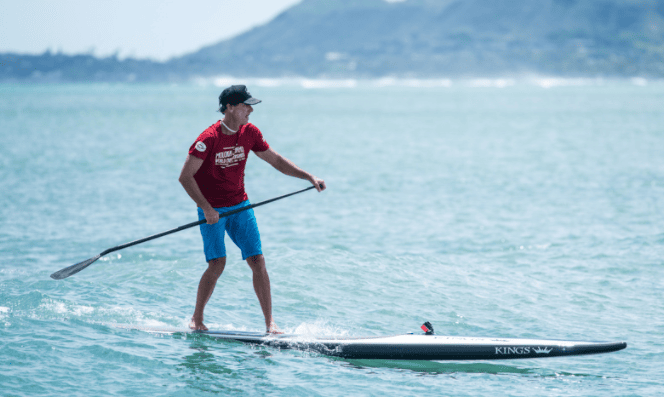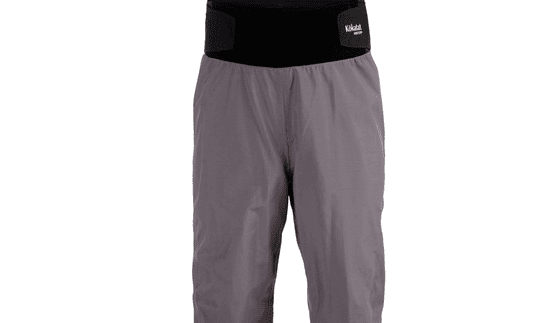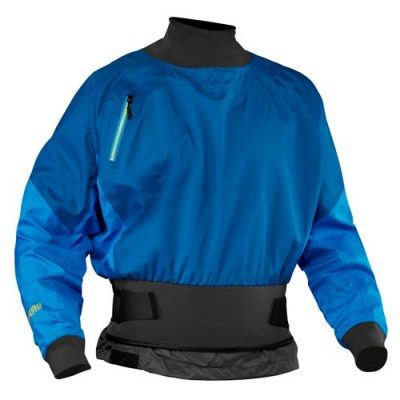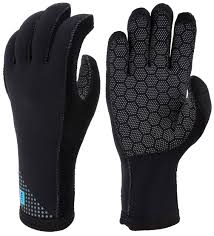Washing Guide For Paddling Gear
-
 By
Sophia Grant
By
Sophia Grant
Paddle sports have become more and more popular over the years. Put it simply, they’re sports that involve paddling of some sort in the water. Depending on what it is, the paddles can either consist of dual blades or a single blade.
Examples of Paddling Sports:
- Kayaking – One of the most popular types of paddling sports. Unlike canoes, the seats in kayaks are not raised up.
- Canoeing – A sport where you paddle with a long, slender boat with raised seats. They’re typically propelled with a single-bladed paddle (can be done solo or in tandem)
- Paddleboarding – An outdoor water activity in which someone stands up on a large board and moves through the water by using a paddle
- Rafting – Some people don’t consider rafting to be a paddle sport but it definitely is since it involves the use of paddles
Table of Contents
ToggleBenefits of Paddle Sports
Paddling sports such as canoeing and kayaking comes with many health benefits. For one thing, it’ll improve your cardiovascular fitness. Not only that, but moving the paddles will increase your muscle strength, especially in the arms, back, shoulders, and chest. The same goes for your legs and torso—they’ll also become stronger.

Aside from that, paddling can also be a great way to meditate. At the same time, it can also be exhilarating; it all depends on how and where you do it.
What Kind of Gear Do You Need For Paddle Sports?
The gear that you need will depend on the type of paddling that you’re doing. With that said, it’s pretty much the same across the various activities.
Generally speaking, you’ll want to wear a shirt that’s specifically designed for paddling. More often than not, they’re made from neoprene material, which has great thermal resistant properties. In other words, you won’t have to worry about being cold even if you get splashed with water. Neoprene pants are also a thing and are highly recommended. Depending on the weather, it may also be a good idea to wear a water-resistant or water-proof jacket over top.
Finally, there are paddling gloves and mitts. Not only will they protect your hands from UV rays, but they’ll also protect them from blisters and chafing.
Keeping Your Paddling Gear Clean
Paddle gear can be expensive. Considering that, you want to do your part to keep them clean—that way, they’ll last longer. Take paddling gloves, for example, it’s probably a good idea to give them a wash if they’ve fallen into the water; you never know what it might have come into contact with. As for your clothes, you’ll want to wash them if you’ve worked up a sweat, which in most cases, will happen.

Generally speaking, you want to wash anything that’s become moist or wet, either from your sweat or the water. You don’t want to leave it in the trunk of your car or in some corner as that’ll only facilitate odors and that’s definitely not something that you want.
Keep in mind, though, that there’s a specific way to wash these types of clothes; it’ll prevent them from getting damaged so that you’ll be able to wear them for longer. Need some help? That’s why we’re here! We’ll be going over how to wash various pieces of paddling gear below. So be sure to read until the end!
What is Neoprene?
Before we dive into the actual how-to-wash section, let’s take a look at neoprene. Like we said earlier, it’s the material that’s often used for paddling gear.
Put it simply, it’s a type of scuba fabric. Made from synthetic chloroprene, it’s entirely waterproof, which makes it ideal for wetsuits and other gear. For one thing, it forms a solid barrier between the wearer and the elements. Not only that, but it provides excellent insulation against the cold. If anything, that’s why it’s often in aquatic activities.
How to Wash Paddling Pants the Right Way

Are Paddling Pants Machine Washable?
Yes, most, if not all paddling pants are machine washable and that includes the ones are made of neoprene. First things first, if your pants have pockets, make sure that they’re empty. Once you’ve done that, turn the fabric inside out, like you would with normal tights. While you can go ahead and put them directly in the washer, we recommend that you use a laundry bag—it’ll help prevent wear and down that can happen during the cycle.
Note: You can wash your paddling pants with other pants and garments so long as you’ve separated and sorted out the colors (i.e. do not mix diff-colored clothes).
Pour in one scoop of ACTIVE detergent after placing the pants in the machine. With these types of fabrics, you do not want to use softeners; it will only do more harm than good. From there, choose a delicate wash cycle. Make sure to only use cold water; hot water is infamous for ruining items.
Wait for the washing machine to come to a complete stop before retrieving your pants. To dry them, hang them up in a well-ventilated area, away from sunlight. You should never dry them in a dryer—this is especially true for those made of neoprene.
Washing Your Paddling Pants in a Basin
Paddling pants are machine washable, however, you can also wash them by hand. It might be more tedious in a way, but it’s also more gentle on the item. Start by preparing a bath; you can either fill a basin or sink with water. Stir in half a scoop of ACTIVE detergent and wait for it to dissolve fully before submerging your paddling pants.
Depending on the material, the pants may float up toward the surface. If that happens, just press it down with your hands. Remember, the entire item should be immersed in the detergent solution. Once you’ve made sure that it is, let it soak for about 15 or 20 minutes; the soap needs time to be able to penetrate into the synthetic fibers.
Rinse your paddling pants thoroughly afterward with water. We recommend draining the dirty water and refilling the sink with water—that way, you can easily rinse the excess detergent out of the pants. Continue to rinse and press out the soap suds until the item is detergent-free.
Soak up the excess water by blotting the pants with a clean towel before hanging them up to air dry.
Washing Instructions for Paddling Tops

Running Paddling Tops Through the Washer
If your top has pockets, make sure that they’re empty. Any zippers, including those on the inside, should be zipped up; the same thing goes for any clasps and fasteners. Once all that is done, turn the top inside out. Place it in a mesh laundry bag, seal it, and load it in the washer. You can wash them with other garments, including other paddling gear, as long as you’re not mixing different colors together.
Pro-tip: If your paddling top is stained or excessively dirty, you may want to pretreat it first by letting it sit in a tub of soapy water. It’ll make the washing process much easier.
Once your top’s in the machine, you can add the detergent—one scoop of ACTIVE detergent is what we recommend unless you’re washing a lot of clothes. Remember to skip the softeners and bleach. The next step it to set up the washer for the cycle. You want to use cold water only with a delicate setting, preferably with minimal spin. Never use hot water—it can easily wear out your tops.
Retrieve the laundry bag from the washing machine after the cycle’s finished. Remove your pants and let them dry naturally inside, away from sunlight. As a general rule, you do not dry them in the dryer.
Hand Washing Paddling Tops
As far as hand washing paddling tops go, you can pretty much treat them like any other top. Start by preparing a bath—for that, you’ll need half a scoop of ACTIVE detergent and a tub of warm water. Mix the two things together with your hands until it’s combined and place your top in. It’s perfectly fine to wash more than one of them at once.
Using your hands, massage the fabric in the solution to help work in the detergent. Afterward, let it sit; you want the top to soak for about 20 minutes. If there’s an odor, you can also add a bit of baking soda or vinegar.
Once the paddling top has been soaked, put it under running water to rinse off the detergent; there shouldn’t be any suds leftover when you’re finished. The last thing that you want is to rehear the item with soap residue—that’ll only irritate your skin!
To dry your paddling top, hang it up. Do not tumble dry.
Washing Paddling Gloves and Mitts

Paddling gloves and mitts are pretty easy to wash. In fact, you can just pop them in the washing machine with your tops and pants! Just remember to close any Velcro strips or fasteners beforehand—you wouldn’t want them to catch on your other items during the wash cycle. For the same reason, we highly recommend that you put them in a garment bag. Not only will it keep them from damaging your other clothes, but it’ll also keep the gloves together.
If you want, you can also wash them by hand. If anything, the most important thing is to soak them in soapy water—you want to make sure that the detergent is able to penetrate the thick material so that it can actually remove the dirt and oils from inside the fibers.
15% Off Amazon Coupon
×Click To Reveal The 15% Off Coupon Code For Your Entire ACTIVE Purchase At Amazon.com
Note: This promotional offer is only guaranteed through the end of the day.




